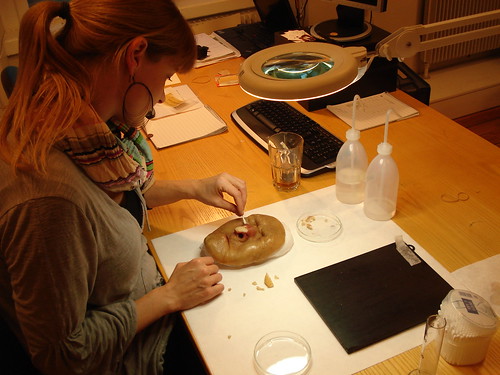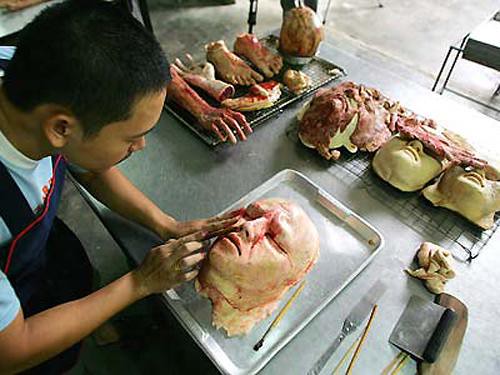 Like so many others, I’m intrigued by a YouTube movie that shows Thai artist Kittiwat Unarrom’s body bakery shop (see the movie below).
Like so many others, I’m intrigued by a YouTube movie that shows Thai artist Kittiwat Unarrom’s body bakery shop (see the movie below).
Mr. Unarrom uses ordinary baking dough (plus cashew nuts, chocolate and raisins) to make bread in the shape of body parts. It’s all perfectly edible (well, I guess cannibals would find real body-parts perfectly edible too 🙂
Mr. Unarrom is said to have been inspired by reading anatomy books and visiting pathology museums. What nobody seems to have suggested, however, is that he may have also been inspired by watching or reading about wax moulages. Because what Mr. Unarrom is doing with dough is what dermatologists and artists a century ago were doing with wax.
Medical wax moulages were used as documentation and teaching aids, for example to communicate the symptoms of skin diseases (an historical low-tech antecedent of telemedicine). Several museums around the world have collections of such moulages. Here at Medical Museion we have a collection of around 75 wax pieces, some of which are displayed (we’ve written about them before). Here is conservator Nicole Rehné busy restoring one of them:

And here is Mr. Unarrom working on one of his ‘loafs’ of bread:

For further reading about wax moulages in the history of medicine, see Thomas Schnalke’s excellent book Diseases in Wax: The History of the Medical Moulage (Berlin 1995).
And here’s the movie:
[biomed]GKSO7m3-MH8[/biomed]
(thanks to Toronto advertising copywriter Jeremy Elder (shape+colour) for the tip about Unarrom’s ‘Body Bakery’)


